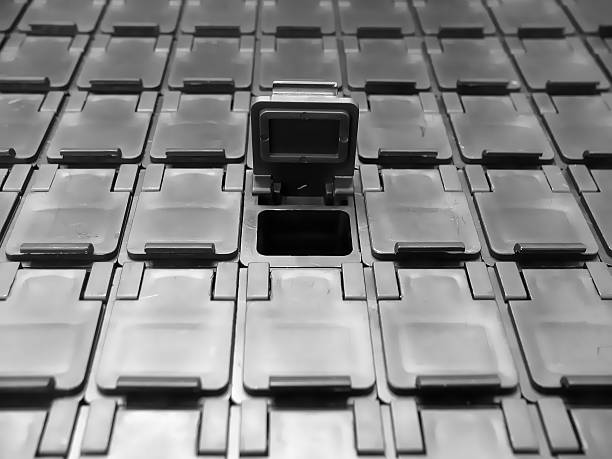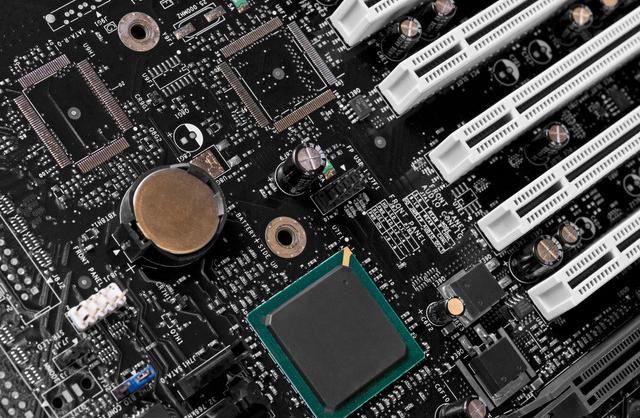Content Menu
● Understanding SMT Production Lines
● Cost Breakdown of Setting Up an SMT Production Line
>> Initial Setup Costs
>> Ongoing Operational Costs
● Total Estimated Cost
● Factors Influencing Costs
● Benefits of Investing in an SMT Production Line
● Challenges Faced When Setting Up an SMT Line
● Conclusion
● FAQ
>> 1. What are the main components needed for an SMT production line?
>> 2. How much does it typically cost to set up an SMT line?
>> 3. What are ongoing operational costs associated with an SMT line?
>> 4. How does production volume affect SMT assembly costs?
>> 5. What factors influence the choice of equipment for an SMT line?
Setting up a Surface Mount Technology (SMT) production line is a significant investment for any electronics manufacturer. The costs can vary widely based on several factors, including the scale of production, equipment choices, and operational requirements. This article provides a comprehensive overview of the average costs associated with establishing an SMT production line, breaking down the various components involved.

Understanding SMT Production Lines
Surface Mount Technology (SMT) is a method used to mount electronic components directly onto the surface of printed circuit boards (PCBs). This technology has become the standard in modern electronics manufacturing due to its efficiency and ability to accommodate smaller components compared to traditional through-hole technology.
An SMT production line typically includes:
- Pick-and-Place Machines: These machines place electronic components onto PCBs with high speed and accuracy.
- Solder Paste Printers: Used to apply solder paste to the PCB pads before component placement.
- Reflow Ovens: These ovens solder components onto the PCB by melting the solder paste.
- Inspection Equipment: Automated Optical Inspection (AOI) systems check for placement accuracy and solder joint quality.
- Conveyor Systems: Facilitate the movement of PCBs through various stages of the assembly process.
- Cleaning Equipment: Essential for removing flux residues and ensuring the reliability of solder joints.
- Test Equipment: Used to verify that assembled PCBs meet specified electrical performance criteria.
Cost Breakdown of Setting Up an SMT Production Line
Setting up an SMT production line involves several cost components, which can be categorized into initial setup costs and ongoing operational expenses.
Initial Setup Costs
1. Equipment Purchase
- Pick-and-Place Machines: Prices range from $30,000 to $200,000 depending on capacity and features. High-speed machines can cost significantly more.
- Solder Paste Printers: Typically range from $5,000 to $50,000.
- Reflow Ovens: Costs vary from $10,000 to $100,000 based on size and capabilities.
- Inspection Equipment: AOI systems can cost between $10,000 and $100,000.
- Cleaning Equipment: Prices range from $5,000 to $30,000 depending on technology and capacity.
- Test Equipment: Depending on specifications, costs can range from $10,000 to over $100,000.
2. Installation and Calibration
- Professional installation services can range from $10,000 to $50,000 depending on the complexity of the setup. Calibration is crucial for ensuring that machines operate within specified tolerances.
3. Facility Setup
- Modifications to the facility may be necessary, including cleanroom requirements and environmental controls. This could cost between $50,000 and $200,000 depending on existing conditions. Proper ventilation systems are also essential for managing fumes from soldering processes.
4. Initial Raw Materials
- The cost for initial raw materials such as PCBs and electronic components can range from $10,000 to $100,000 based on production volume. Bulk purchasing can significantly reduce costs per unit.
5. Training Costs
- Training staff on new equipment may incur costs between $5,000 and $20,000. This includes both initial training sessions and ongoing education as technology evolves.
6. Software Costs
- Design software licenses for PCB design and machine programming can add another layer of expense. These licenses typically range from $5,000 to $30,000 annually.
Ongoing Operational Costs
1. Labor Costs
- Skilled labor for operating machinery can range from $50,000 to $200,000 annually based on workforce size and expertise. Continuous training programs are essential for maintaining skill levels as technology advances.
2. Material Costs
- Ongoing expenses for raw materials and consumables typically amount to $15,000 to $120,000 annually depending on production volume and component types used in assemblies.
3. Maintenance and Repairs
- Regular maintenance is essential for preventing downtime; annual costs can range from $20,000 to $100,000. Maintenance contracts with equipment suppliers can help manage these costs effectively.

4. Utilities
- Operating an assembly line requires significant energy; annual utility costs can vary from $20,000 to $100,000 depending on local rates and energy efficiency measures implemented in the facility.
5. Software Licenses
- Keeping design software updated may incur annual costs between $5,000 and $20,000. Additionally, software updates may require periodic training sessions for staff.
6. Waste Management
- Proper disposal of electronic waste and hazardous materials is critical in compliance with environmental regulations; costs can range from $2,000 to $10,000 annually.
Total Estimated Cost
Considering both initial setup costs and ongoing operational expenses, the total investment for establishing an SMT production line can range from approximately $200,000 to over $1 million, depending on the scale and sophistication of the equipment chosen.
Factors Influencing Costs
Several factors influence the overall cost of setting up an SMT production line:
- Production Volume: Higher volumes often lead to lower per-unit costs due to economies of scale.
- Complexity of Assemblies: More complex designs with higher pin counts or double-sided assemblies will increase setup time and costs.
- Geographical Location: Labor rates and facility costs vary significantly by region.
- Equipment Choices: Investing in high-end equipment may result in lower operational costs but requires a higher initial investment.
- Technology Advancements: As technology evolves rapidly in electronics manufacturing, investing in newer technologies may yield better efficiency but at a higher upfront cost.
Benefits of Investing in an SMT Production Line
Investing in an SMT production line offers several advantages:
- Increased Efficiency: SMT allows for faster assembly times compared to traditional methods due to automated processes.
- Higher Component Density: Smaller components enable more functionality within a smaller footprint on PCBs.
- Improved Reliability: The use of solder paste instead of through-hole soldering results in stronger connections that are less prone to failure.
- Flexibility: Modern SMT lines can easily adapt to different product designs with minimal reconfiguration time.
- Cost Savings Over Time: While initial investments are high, reduced labor costs and increased throughput lead to long-term savings.
Challenges Faced When Setting Up an SMT Line
Despite its benefits, setting up an SMT production line comes with its own set of challenges:
- High Initial Investment: The upfront capital required can be a barrier for small manufacturers or startups.
- Technical Expertise Required: Operating advanced machinery requires skilled personnel who are often hard to find or expensive.
- Maintenance Needs: Regular maintenance is crucial but can lead to unexpected downtime if not managed properly.
- Supply Chain Management: Sourcing quality components consistently is vital; disruptions can impact production schedules significantly.
- Regulatory Compliance: Adhering to local regulations regarding waste disposal and environmental impact adds another layer of complexity.
Conclusion
Setting up an SMT production line is a complex process that requires careful planning and budgeting. Understanding the various cost components involved—from equipment purchases to ongoing operational expenses—can help manufacturers make informed decisions that align with their production goals. By investing wisely in equipment and training while considering factors like production volume and complexity, companies can establish efficient SMT lines that enhance their manufacturing capabilities while navigating potential challenges effectively.

FAQ
1. What are the main components needed for an SMT production line?
The main components include pick-and-place machines, solder paste printers, reflow ovens, inspection systems (like AOI), conveyor systems, cleaning equipment, and test equipment.
2. How much does it typically cost to set up an SMT line?
The total cost can range from approximately $200,000 to over $1 million depending on equipment choices and production scale.
3. What are ongoing operational costs associated with an SMT line?
Ongoing costs include labor expenses ($50,000-$200,000), material costs ($15,000-$120,000), maintenance ($20,000-$100,000), utilities ($20,000-$100,000), software licenses ($5,000-$20,000), and waste management ($2,000-$10,000).
4. How does production volume affect SMT assembly costs?
Higher production volumes generally lead to lower per-unit costs due to economies of scale in material procurement and labor efficiency.
5. What factors influence the choice of equipment for an SMT line?
Factors include production volume requirements; complexity of assemblies being produced (e.g., pin count); budget constraints; desired speed/accuracy levels of placement machines; technological advancements; and geographical location considerations.




















